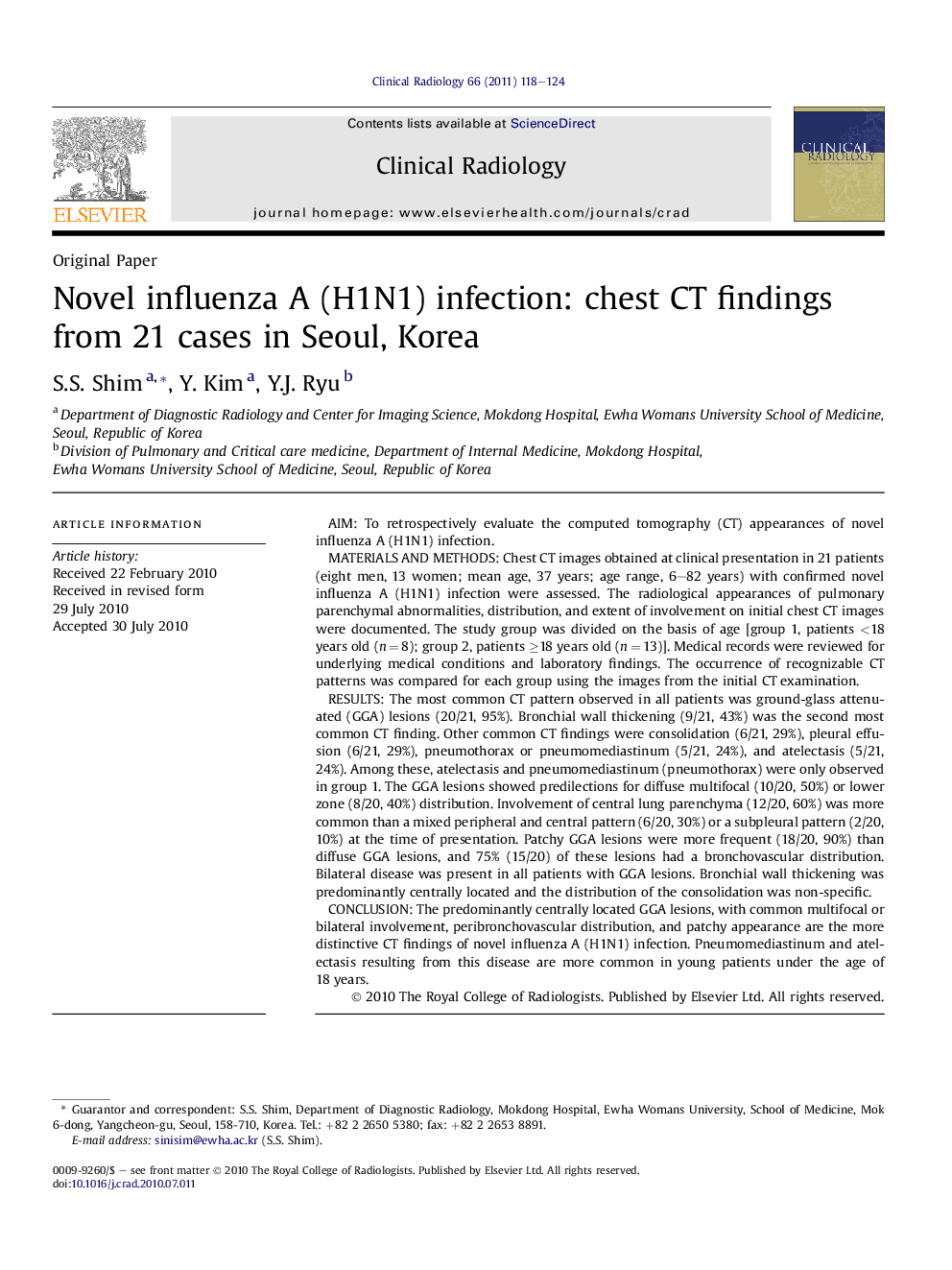| Article ID | Journal | Published Year | Pages | File Type |
|---|---|---|---|---|
| 3983163 | Clinical Radiology | 2011 | 7 Pages |
AimTo retrospectively evaluate the computed tomography (CT) appearances of novel influenza A (H1N1) infection.Materials and methodsChest CT images obtained at clinical presentation in 21 patients (eight men, 13 women; mean age, 37 years; age range, 6–82 years) with confirmed novel influenza A (H1N1) infection were assessed. The radiological appearances of pulmonary parenchymal abnormalities, distribution, and extent of involvement on initial chest CT images were documented. The study group was divided on the basis of age [group 1, patients <18 years old (n = 8); group 2, patients ≥18 years old (n = 13)]. Medical records were reviewed for underlying medical conditions and laboratory findings. The occurrence of recognizable CT patterns was compared for each group using the images from the initial CT examination.ResultsThe most common CT pattern observed in all patients was ground-glass attenuated (GGA) lesions (20/21, 95%). Bronchial wall thickening (9/21, 43%) was the second most common CT finding. Other common CT findings were consolidation (6/21, 29%), pleural effusion (6/21, 29%), pneumothorax or pneumomediastinum (5/21, 24%), and atelectasis (5/21, 24%). Among these, atelectasis and pneumomediastinum (pneumothorax) were only observed in group 1. The GGA lesions showed predilections for diffuse multifocal (10/20, 50%) or lower zone (8/20, 40%) distribution. Involvement of central lung parenchyma (12/20, 60%) was more common than a mixed peripheral and central pattern (6/20, 30%) or a subpleural pattern (2/20, 10%) at the time of presentation. Patchy GGA lesions were more frequent (18/20, 90%) than diffuse GGA lesions, and 75% (15/20) of these lesions had a bronchovascular distribution. Bilateral disease was present in all patients with GGA lesions. Bronchial wall thickening was predominantly centrally located and the distribution of the consolidation was non-specific.ConclusionThe predominantly centrally located GGA lesions, with common multifocal or bilateral involvement, peribronchovascular distribution, and patchy appearance are the more distinctive CT findings of novel influenza A (H1N1) infection. Pneumomediastinum and atelectasis resulting from this disease are more common in young patients under the age of 18 years.
